SID created the I-Zone as a forum for live demonstrations of emerging information display technologies. This special exhibit offers researchers space to demonstrate their prototypes or other hardware demos during Display Week, and encourages participation by small companies, startups, universities, government labs, and independent research labs.
Don’t miss the 2014 I-Zone, taking place two days only: Tuesday June 3, and Wednesday, June 4, on the show floor at Display Week. Here’s a preview of what you’ll see:
Asahi Kasei Chemicals Corporation has developed a “perfect” optically isotropic polymer. The Absolute Zero Birefringence Polymer (AZP) is the first of its kind anywhere in the world. The AZP can be processed into optical films or parts via melting extrusion or injection molding without sacrificing any of its zero features. AZP is designed to be used in any kind of display, contributing to high definition and low power consumption.
At Display Week, Daetec will introduce DaeFlex, its family of solutions to flexible display manufacturing challenges. Technologies that will be demonstrated in the I-Zone include cast flexible transparent substrates, PR strippers, and washable coatings. DaeFlex’s temporary bonding technologies work with many form factors and offer high thermal resistance, easy removal, and low cost.
|
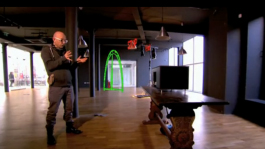
|
Holoxica, a tech startup focusing on digital holograms and holographic displays, has developed a series of simple displays that show images floating in free space that can be viewed without special glasses.
|
|
The company’s second-generation holographic display is based on a large-format (20 x 25 cm) holographic optical element, a laser projector, embedded electronics, and a motion sensor. The company has written a number of apps for the display that enable the viewer to “draw” in mid-air as well as press icons or buttons.
|
|
INSiAVA has developed several new CMOS micro-displays with improved luminance, including the CMOS QVGA (15 cd/m2) and CMOS dot matrix (90cd/m2) microdisplays for use in low light-level applications.
|
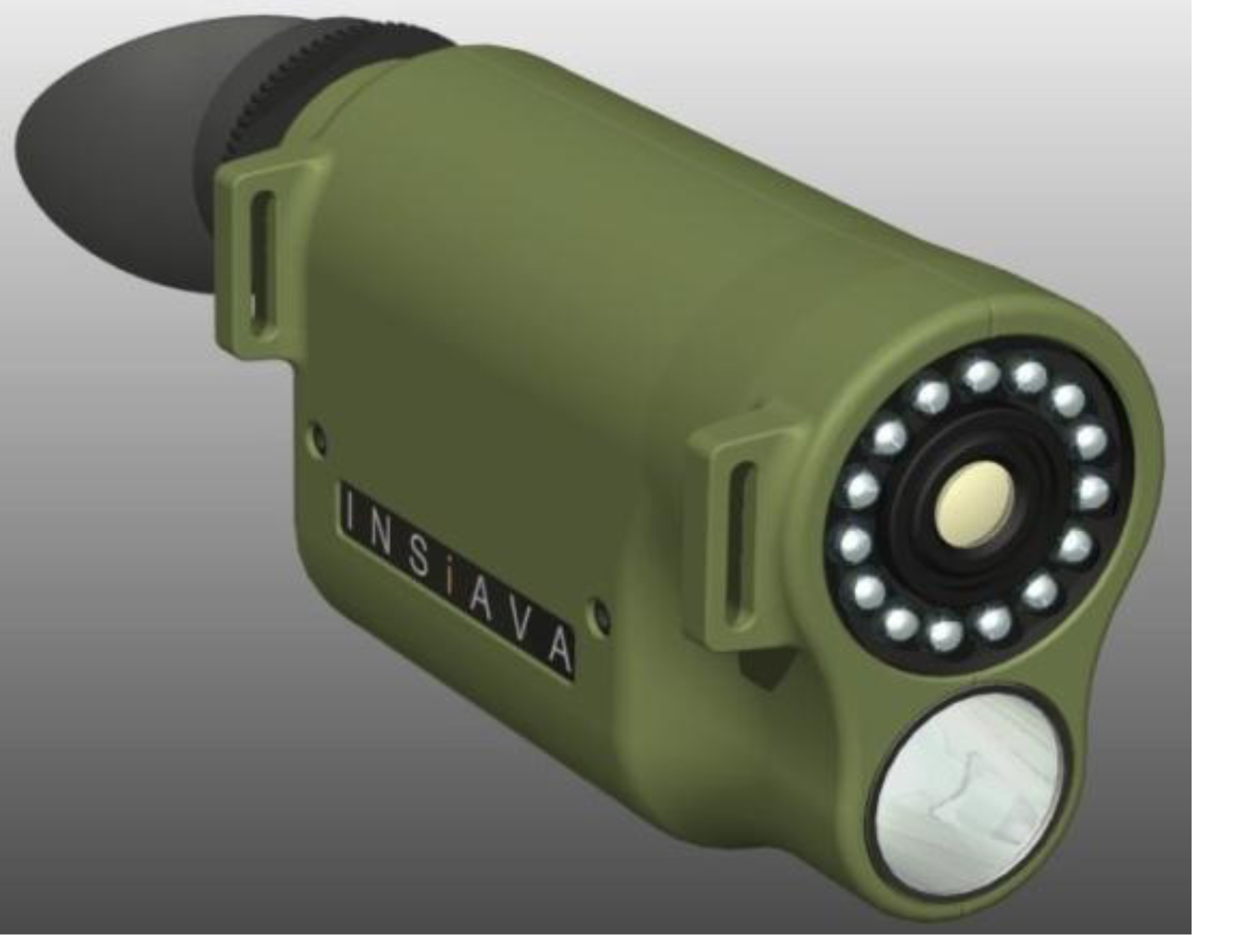
|
|
The following three prototype application demonstrators will be exhibited: handheld intruder detector with near-infrared all-CMOS imager and QVGA micro-display, a Head Mounted Display (HMD) near infrared viewer incorporating a CMOS QVGA micro-display for use in surveillance applications, and a medium priced sports glasses application with a built-in CMOS dot-matrix information display enabling, for example, a hands-free heart-rate display for runners or cyclists.
|
|
iShuu Tech has developed a flexible wearable display platform suitable for fashion. The first form factor the platform has been applied to is a “smart” high-heeled shoe.
|
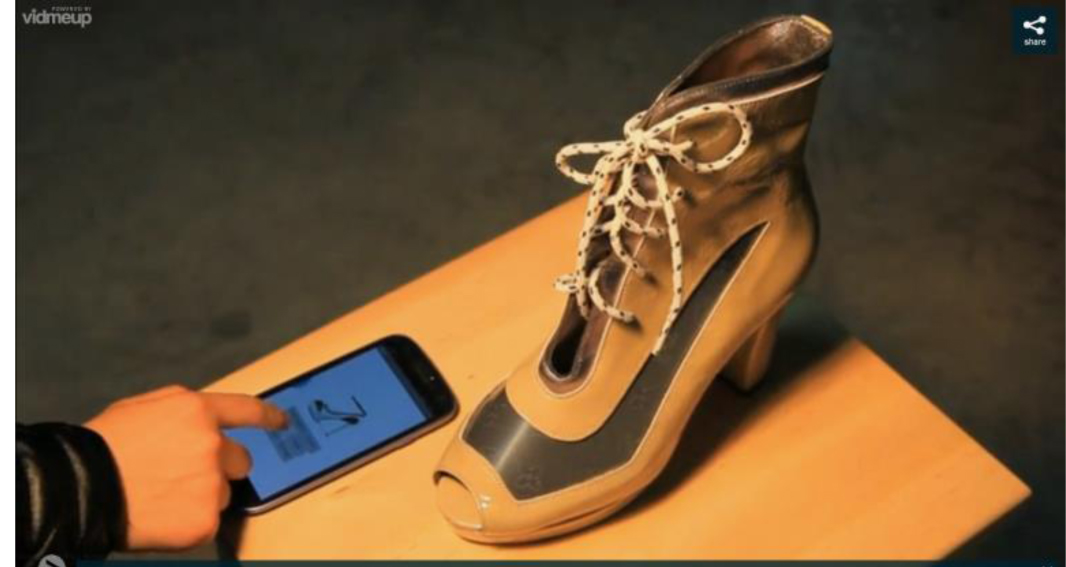 |
|
The shoe is controlled via a smartphone app to change its design patterns and colors to match the wearer’s outfit. The communication between the shoe and the phone is via Bluetooth. Future potential platforms include bags, purses, hats, dresses, belts, and other accessories as well as non-fashion-related applications.
|
Lumiode is developing a new high-brightness light engine platform by monolithically integrating high-performance thin-film silicon transistors with III-V optoelectronic materials. By combining high-efficiency LED light sources with a silicon control layer, its LED microdisplay has broad applications in both the display market (such as head-mounted displays, head-up displays, embedded pico projectors, and projectors) and other non-display market areas (such as 3D scanning, computational photography, and biomedical imaging)
Plastic Logic has created an innovative, flexible, AMOLED demonstrator based on its OTFT (organic thin-film transistor) backplane. OTFTs are fundamentally the most flexible transistor technology available; this demonstrator illustrates that Plastic Logic is ready to transform new markets such as wearables. The demonstrator is made using a low-cost, polyethylene terephthalate (PET) substrate and organics that are solution processed at low temperatures (<100 oC). This combination of solution processing and flexible plastic substrates has the advantage of naturally lending itself to low-cost roll-to-roll manufacturing.
Ostendo Technologies will demonstrate a novel display device called the Quantum Photonic Imager (QPI). The QPI is a three-dimensional integrated circuit with micro-pixelated LED layers, stacked on top of and controlled by a custom graphics processor. Each pixel directly emits multi-color (RGB) light. The resulting pixel density of about 25 million pixels per square inch enables power efficient and ultra-compact displays and projectors that are ideal for mobile and wearable displays. The QPI’s extremely high pixel density is also ideal for glasses-free 3D light-field displays, applicable in commercial, defense, air traffic control, oil and gas, and similar industries.
PolarScreens is developing a novel 180Hz tri-phase patterned light generator to provide a comfortable glasses-free 3D display. The display combines an 180Hz patterned backlight with a 180Hz 3D LCD panel and a head tracking system capable of displaying full resolution per eye with complete freedom of movement. The concept takes advantage of the fact that in general, the left and the right images of a stereo video are highly similar. By decomposing the video into 3 fields: a common field, a left-right delta and right-left delta, and displaying the common field during full backlight and the delta fields only in alternating vertical patterned strips, the result is a more comfortable viewer experience with minimal flickering.
Researchers at Princeton University have developed the first capacitive 3D gesture-sensing system by substantially extending the sensing range of a capacitive touch screen. The sensing system consists of a gesture sensing sheet and a customized readout IC. With 30cm sensing range and <1cm resolution at 20cm distance, the 23-in. gesture-sensing display is able to detect the 3D position of a human hand, covering an entire display area. Compared with optical-based 3D sensing solutions, all near display gestures are captured with higher resolution, larger coverage, and |
|
The Zephyr E-portfolio from Printless Plans is a sleek yet rugged large-format e-Paper device made for the demands of Architecture, Engineering and Construction (AEC) professionals.
|
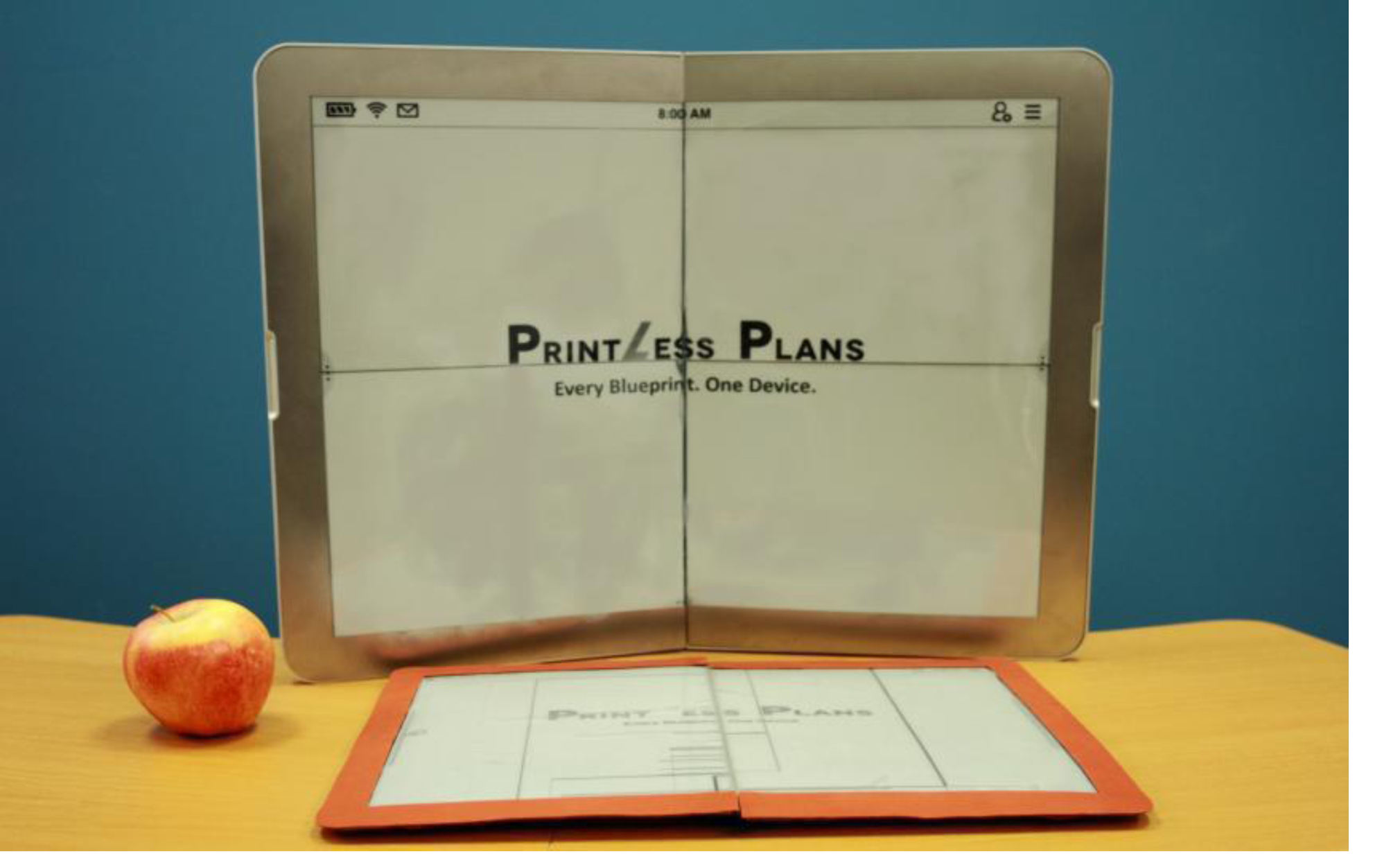 |
It features an ultra-sharp, daylight-readable, 21-in. display that is as easy to read as high-quality laser printed drawings. However, the E-Portfolio is also resistant to glare, dirt, and moisture and features a pressure touch sensor, making it ideal for use with gloves and in environments such as construction sites.
Sharp has developed a new optical film that successfully solves TN mode viewing angle issues that have plagued the industry for nearly 30 years. The film consists of microstructures smaller than subpixels for improving the viewing-angle characteristics of TN-LCDs (grayscale inversion, color shift, contrast ratio, etc.). The film contains many micro cavities positioned behind small black dots in the transparent polymer layer. By optimizing the three-dimensional shape of the cavities for TN-LCD, the film, when attached to the surface of TN-LCD panels, can realize excellent viewing angles without the blur of the frontal image and the reduction of the contrast ratio under bright ambient light. Further, the film is simply fabricated by the roll-to-roll self-alignment photo-lithography.
|
|
Sun Innovations has developed the first emissive projection display (EPD) that plays full-color, HD-video onto a fully transparent screen, with unlimited viewing angles. The novel optic-clear emissive screen is made of fluorescent nano-materials in PET film. The new display will readily convert any glass window or windshield of buildings or vehicles to a plug-and-play digital display panel, to play digital content without hindering the view through the display.
|
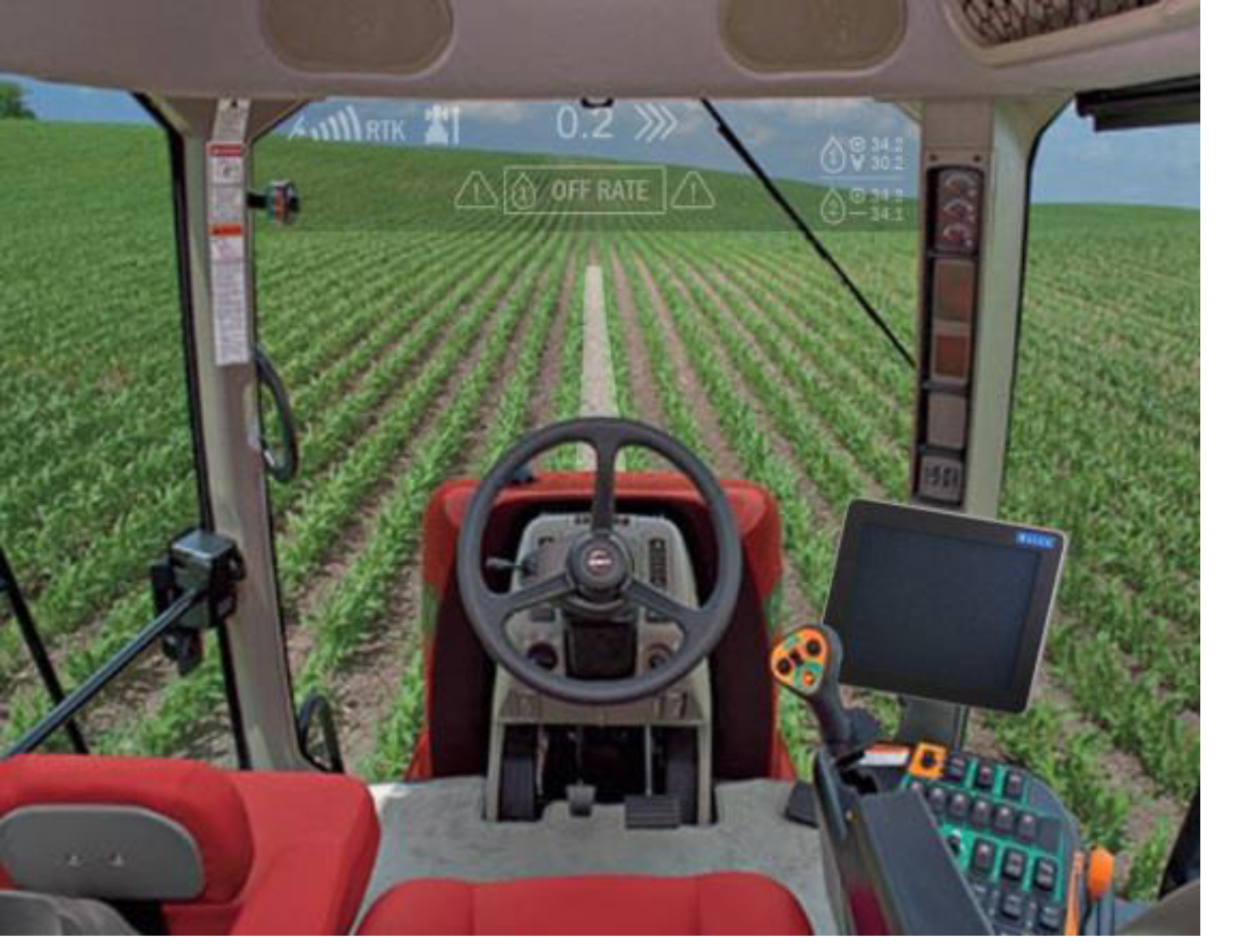 |
With EPD, a new HD-video projection display will be presented onto a “pitch-black” emissive screen, for high-contrast projection display and TV applications under bright ambient light.
The Haptic One Glass Solution (HOGSTM) is a revolutionary touch and haptics offering from Tangible Haptics. This solid-state technology integrates high-speed touch sensing with variable-friction haptic output, producing an extraordinary range of haptic experiences. Unlike existing vibrotactile technologies, HOGSTM effects are localized and rendered with extremely high bandwidth. Additionally, there is no added stack-up to the touchscreen device, power consumption is low, and cost is minimized by leveraging established manufacturing processes.
|
|
Xpand3D’s Amblyz electronic eyeglasses are a medical device used to treat amblyopia, or “lazy eye,” as it is more commonly known, in children. The glasses provide occlusions of the eye in an intermittent fashion, and prevent complications common to more traditional therapies such as eye patches.
|
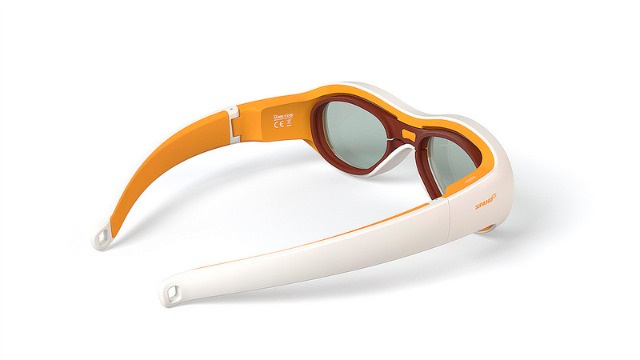 |
Amblyz glasses are formed and worn in the shape of regular eye glasses to facilitate use. They have been developed by XPAND in conjunction with world-renowned ophthalmologists and optometrists. The technology is tested and proven safe and effective.
Researchers at Zhejiang University have created a scalable, immersive light-field display using off-the-shelf techniques. This system is an alternative, modular realization of a much more expensive multi-projector-type immersive light-field display. Potential applications include interactive education and computer-aided design.
|